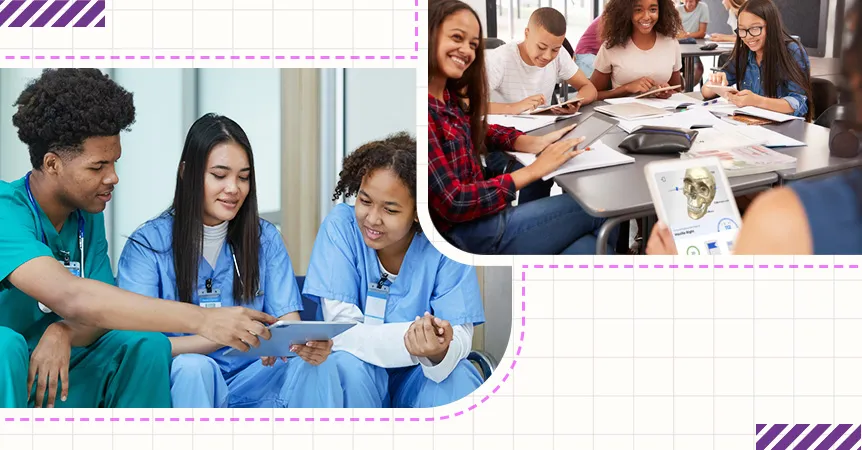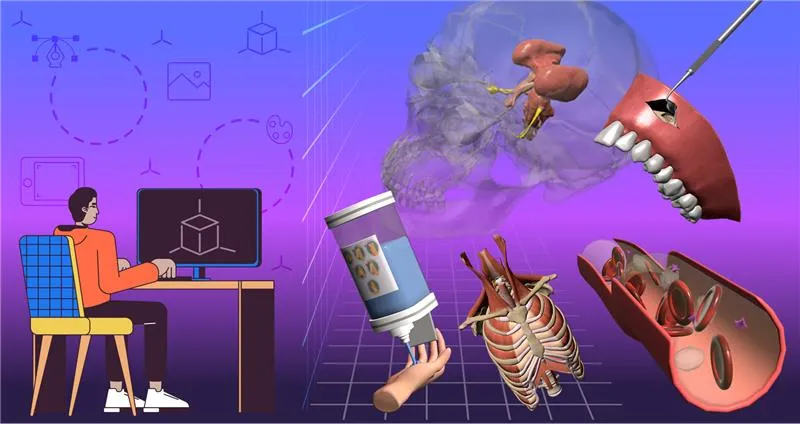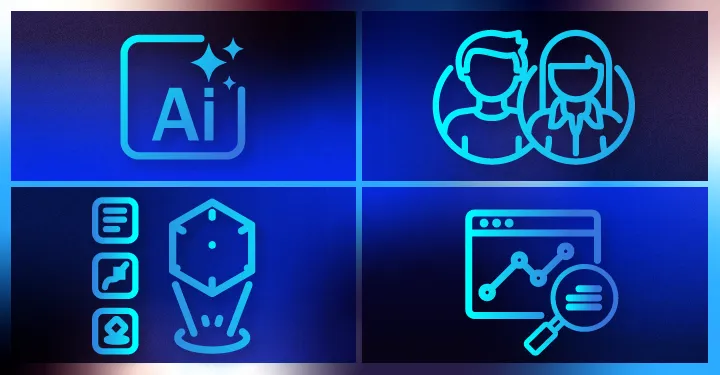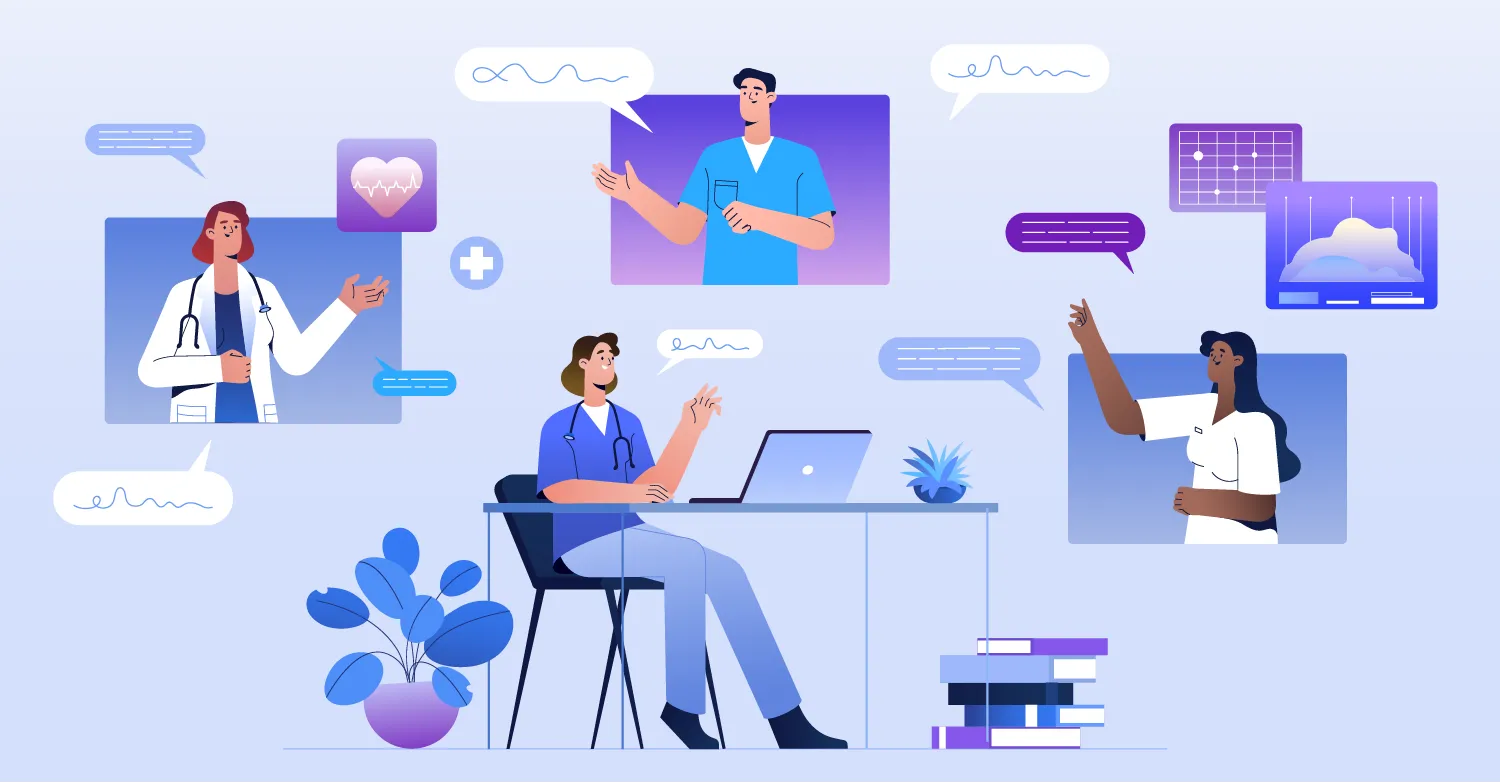
Faculty burnout: no university leader needs reminding of the high stakes that accompany this deep-rooted problem, but it's still worth clarifying that unless educator stress can be addressed, institutions risk facing problems ranging from staff retention and teaching quality to graduate outcomes.
With all of these high-impact consequences on the line, it's essential to get a handle on the scale of educator stress, on which journals, institutions, and industry sources have plenty to report:
- A 2024 survey from TimelyCare found that 53% of its 500 participants considered leaving their jobs due to stress, workload, and burnout.
- An article in The American Journal of Pharmaceutical Education has pointed out that burnout rates are particularly severe among health professions faculty.
- These findings suggest that the much-cited results of a 2023 Inside Higher Ed survey remain in play: 40% of faculty are often or always worn-out.
When faced with this alarming prevalence of burnout, institutions can't afford to leave any stones unturned in the search for solutions. But, of course, before institutions reach the stone-turning stage, they have access to a more immediate and compelling source of inspiration in the form of the educators who have first-hand experience of the problem.
One such solution was delivered by Dr. JoAnn Guranlian during a recent Immersify webinar. Recognizing the demands of the traditional lecture format, she proposed that flipped learning (in which students are exposed to key information before class) can relieve educator pressure and unlock more rewarding teaching experiences.
This is an innovative take on the power of reverse teaching, extending beyond learning outcomes to encompass educator-focused benefits (and, by extension, helping to ease some of the institutional implications of staff burnout). And this raises the question: what are the other advantages of flipping the classroom, especially from a university leader's perspective?
Read on to explore five flipped classroom benefits that connect directly to institutional goals, from improving academic outcomes to making better use of faculty time.
What is Flipped Learning? A Quick Refresher
Flipped learning (sometimes known as reverse teaching) is an example of blended learning in which students engage with core content before class. This is best achieved through interactive digital platforms that combine:
- Lessons
- Quizzes
- Flashcards
- Simulation experiences
Together, activities like these deliver foundational information on a given topic before the relevant class begins. There's a simple idea at the heart of this approach: that students enter labs and lecture halls equipped with a reasonable baseline of knowledge on the day's subject matter.
And while the most-cited disadvantages of blended learning include limited face-to-face time for students, flipped classrooms reverse that problem by ensuring in-person time is then used for discussion, feedback, and applied learning.
Even without the data that follows, it's easy to see why this model is particularly well-suited to healthcare education, where contact time is limited and hands-on learning is essential. But the specific advantages of flipping the classroom are many, varied, and steeped in institutional impact.
We've picked out the top five: read on for the full breakdown.
TAKE A DEEPER DIVE INTO REVERSE TEACHING | ‘Education Leaders: Should Your Institution Adopt a Flipped Classroom Model?’
1. Strengthen Attendance and Academic Culture Through Higher Student Engagement
Reverse teaching consistently correlates with higher levels of student engagement: one of the most frequently cited benefits of flipped classrooms. It's worth noting, for the sake of completeness, that much of the literature on flipped learning is constellated around the K-12 level, but the evidence is compelling enough to warrant a seat at the higher ed table. For example: one wide-ranging meta-analysis in Computer Education found that 93% of the 107 studies it reviewed saw at least one element of engagement (behavioural, affective, or cognitive) improved under a flipped classroom approach.
And while there might be fewer pieces of research that extend to higher education, those that do are compelling. By way of a case in point: a 2025 study of 71 students at Ajman University found that flipped learning has the potential to improve learner motivation and engagement.
It hardly needs to be said that there are institutional benefits to be gleaned from engaged and motivated students, but it's important to remember that these sometimes abstruse-sounding pedagogical models have a tangible impact on factors like:
- Better attendance
- Greater continuity of learning
- A more collaborative classroom environment
And, crucially (especially in a world of educator burnout and constrained resources), this shift represents a way to improve teaching effectiveness without increasing contact hours or staffing needs.
 2. Improve Learning Outcomes to Boost Progression and Reduce Remediation
2. Improve Learning Outcomes to Boost Progression and Reduce Remediation
Engagement is important, but only in conjunction with strong academic performance. And, as it happens, the research suggests that better grades are another advantage of flipped classrooms.
One of the key pieces of research in this area takes the form of a 2018 meta-analysis by Hew and Lo, covering 28 studies in medical, nursing, dentistry, and pharmacy education. The authors found that the benefits of flipping the classroom include statistically significant improvements in academic performance.
More recently, a Journal of Dental Education article published in October 2025 was able to quantify those improvements to the tune of an odds ratio of 2.46 (meaning students who engaged in flipped learning were 2.46 times more likely to perform an extraction without help). It also found that students exposed to reverse teaching reported significantly lower anxiety levels, both before and during the procedure. This isn't directly related to learning outcomes, but it does point to the sheer variety of benefits that the model can bring to the table, especially in relation to the all-important hands-on skills that dominate healthcare education.
Obviously, these impacts are self-evidently beneficial from a student perspective. But viewed through the lens of an institutional leader, stronger academic performance means:
- Fewer resits
- Less time spent on remediation
- More confident progression through clinical or practical training (especially if anxiety levels are lower at these crucial junctures)
More broadly: the importance of graduate readiness can't be overstated in healthcare fields, where competent, confident new professionals are an ever-growing necessity. As such, any teaching technique that can bolster that readiness will benefit not only the healthcare professions, but the reputations of institutions that supply those new cohorts of healthcare workers.
FIND OUT HOW TO IMPLEMENT FLIPPED CLASSROOM PRINCIPLES WITH EASE | ‘Fitting the Pieces Together: 3 Easy Ways to Embed Pre-Mapped Learning Technology into Core Modules’
3. Meet Educator and Learner Preferences via Flexible, Student-Centered Learning
Flipped learning’s benefits don’t end with engagement (or even outcomes). In a more practical sense, the model gives students control over how and when they engage with course content.
By shifting initial instruction into the asynchronous space, learners can study at their own pace: pausing, replaying, or revisiting materials as needed, thereby facilitating self-directed learning.
Student appetites for reviewing course material in their own time were noted in a 2024 Frontiers in Education study, which also pointed to a preference for blended learning among educators (in which students are offered a mix of online and in-person materials).
Flipped classrooms support both of these preferences, offering students learning materials to review at their leisure before class while giving educators a workload-friendly means of offering flexible learning. And, as we discussed in a piece on decreased public confidence in higher education and rising tuition costs in dentistry, meeting student expectations is less a nice-to-have and more a cast-iron requirement for institutional leaders keen to demonstrate that their programs offer a perceived value that better matches the price of admission.
DISCOVER PRACTICAL TIPS ON FLIPPED CLASSROOM IMPLEMENTATION | 'How to Flip Your Classroom With Immersify: Embracing Flipped Education in 5 Simple Steps'
 4. Maximize Contact Hours and Protect Faculty Wellbeing
4. Maximize Contact Hours and Protect Faculty Wellbeing
In flipped classrooms, scheduled contact hours are repurposed for more interactive and applied learning. That is: instead of delivering core content in the room, educators can use that time to support higher-order activities, which might include:
- Clinical reasoning
- Collaborative problem solving
- Hands-on skills practice
- Targeted support for more difficult areas
In a recurring theme on this topic, it's not difficult to see how students benefit from this element of flipped learning. But, as mentioned above, Immersify’s own webinar saw Dr. JoAnn Gurenlian offer a telling analysis of flipped learning's benefits as a reprieve from lectures (as opposed to merely being an effective teaching method). This is especially counter-intuitive since (at a glance) flipped learning might be seen as a heavier lift for teachers who need to supply pre-work alongside their usual classes. This isn't the case when the right platforms are used; these will come with pre-made pre-work that's embedded into curricula. But it's striking nonetheless that, for Dr. Gurenlian, flipped learning can be a good change of pace for the person behind the lectern.
Beyond the obvious student benefits at play here, leaders will also note that this shift toward more purposeful use of fixed teaching hours can also reduce that burden of repeated content delivery. In turn, this suggests that flipped learning can help alleviate the strain that contributes to staff burnout and attrition. In a sector where academic turnover carries real financial and operational costs, flipping the classroom offers a scalable way to simultaneously support teaching quality and, in the long term, workforce sustainability.
HOW DOES FLIPPED LEARNING FIT INTO PACKED PROGRAMS? READ ON | ‘Learning Technology and Curriculum Delivery: Help or Hindrance?’
5. Develop Lifelong Learners to Enhance Graduate Readiness and Institutional Reputation
Perhaps one of the more often-overlooked flipped classroom benefits, it's important to consider the model as a means of helping students take responsibility for their learning.
This was a point raised by Dr. JoAnn Gurenlian at ‘Beyond the Buzzword’, and the need for this ethos was echoed by Dr. Brett Kessler, President of the ADA, who pointed out that:
The dentist or hygienist [students] are when they first graduate is nothing compared to what they are five, six years down the road: they need to keep growing.
For colleges and universities to maintain a strong reputation in the healthcare sector, their graduates need to be capable of long-term development. After all, as Dr. Kessler suggests, continued growth and learning throughout their careers is essential.
In this light, flipped classrooms are a vital way to instil self-directed learning habits among students whose abilities to proactively and independently grow their skillsets post-graduation will determine their effectiveness as practitioners (and, by extension, the program quality of the institutions that taught them).
SEE SELF-DIRECTED LEARNING IN ACTION | ‘Simulation Spotlight: Local Anesthetic in Dental Education Q&A’
Key Takeaways on the Flipped Classroom: Advantages that Count for Healthcare Education Leaders
Flipped learning presents a timely, evidence-backed opportunity for universities and colleges looking to strengthen program delivery and ease pressure on faculty. When executed well and backed by the right resources, flipped classroom models can:
- Strengthen attendance, participation, and academic culture through deeper student engagement
- Improve pass rates, graduate readiness, and progression by supporting better knowledge retention and performance
- Meet the needs and preferences of flexibility-minded students and workload-aware educators
- Maximize the impact of contact hours by focusing classroom time on high-value teaching
- Develop resilient, future-ready graduates through the cultivation of self-directed learning habits
For higher education leaders, these advantages connect directly to a wealth of operational priorities, from program sustainability and learner progression to long-term institutional reputation.
Frequently Asked Questions on Flipped Learning
Flipped learning is an instructional approach where students study core content before class (often through videos, quizzes, or digital simulations) so that face-to-face time can focus on applied learning. In higher education, especially in healthcare disciplines, this model helps maximize limited contact time and supports more active, student-led learning.
The key benefits of flipped classroom models include improved student engagement, stronger academic outcomes, greater flexibility for diverse learners, and more effective use of classroom time. For institutions, these gains translate into stronger retention, reduced staff burnout, and improved operational efficiency.
Reverse teaching (another name for flipped learning) helps universities and colleges operate more efficiently. By reducing lecture fatigue and repurposing classroom time for higher-order learning, institutions can support faculty wellbeing, improve teaching outcomes, and create more sustainable program models. These outcomes are especially valuable in competitive or resource-constrained disciplines like dentistry and nursing.
Yes, flipped classrooms are a type of blended learning. In blended learning, digital tools are combined with in-person instruction. Flipped models are one of the clearest blended learning examples, since students study core material online before class and apply it through discussion, practice, or simulation in class.
Commonly cited disadvantages of blended learning include reduced face-to-face time, uneven student preparation, and fragmented course flow. In higher education, flipped classrooms flip (as it were) many of these challenges: pre-class resources ensure students come prepared, and in-person time is preserved for discussion, feedback, and applied learning. This makes flipped learning one of the most effective ways to avoid the typical disadvantages of blended learning, giving students all the benefits of digital resources and all the benefits of tailored, higher-order instruction.
Ready to Make Flipped Learning Work for Your Program?
If your institution is exploring (or just discovering) flipped classroom models, Immersify offers a flexible, curriculum-aligned way to put the principles into practice, without adding pressure to staff or systems.
Our interactive learning tools come equipped with everything you need to support pre-class engagement, self-directed study, and simulation-based preparation, freeing up in-person time for higher-order skills and clinical reasoning.
Whether you’re in dental, nursing, or allied health education, Immersify helps you implement flipped learning at scale, with no need for extra resources or complicated integrations.
Editor's note: this piece was updated in October 2025 to reflect newer research into flipped classrooms.
This article was reviewed for clinical accuracy and educational relevance by Dr. Martin Ling, a GDC-registered dentist and Fellow of the Higher Education Academy.
Join our mailing list
Get the latest updates on immersive learning, industry trends, and resources delivered straight to your inbox.



